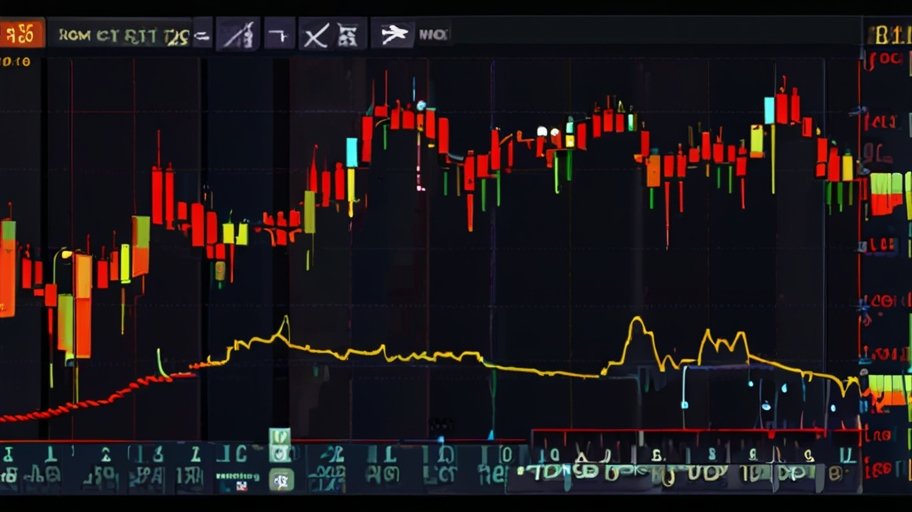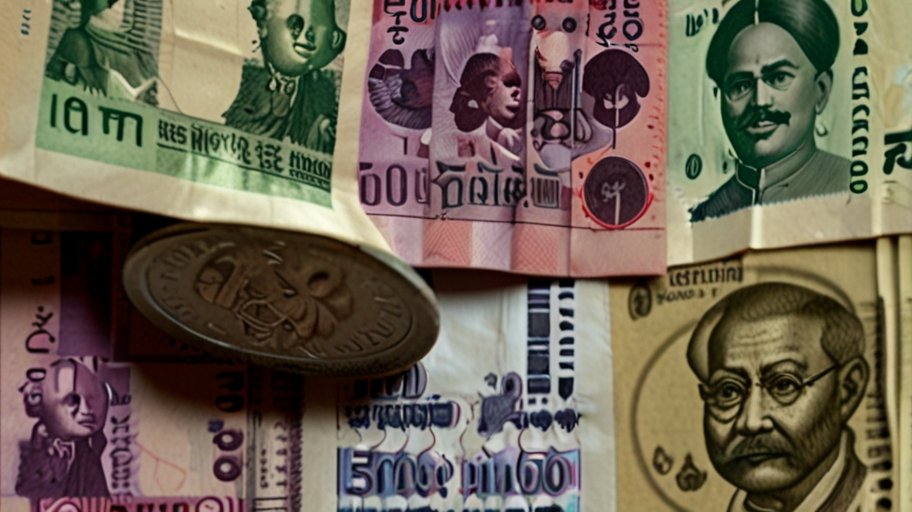The Market Economy of India: A Thorough Analysis
India’s market economy is one of the best and overall complex on the planet. With an all inclusive community of over 1.4 billion, India keeps an eye on a colossal and dynamic market that has been developing quickly all through late various years.
From its post-opportunity communist roots to the development changes of the 1990s, India has changed into a rich and around the world related economy.
This article offers a beginning to end assessment of India’s market economy, its progress, key districts, inconveniences, and future possibilities.
1.Historical Foundation: The Essential preparations of India’s
Market Economy

The arrangement of India’s economy before freedom was essentially agrarian, with limited scope tries that flourished under adjoining areas and during the English edges time span.
Regardless, English colonization covered India’s development, driving a united financial framework to help the region.
Resulting to getting a valuable open door in 1947, India picked a blended money related model that cemented pieces of communism and classified adventure.
1.1 The Solicitation Economy Period (1947-1991)
In the fundamental generally few a long time after a potential open door, India took on a for the most part coordinated money related model energized by the Soviet Connection.
The public power controlled key associations, and the grouped district was bound by serious standards and permitting necessities, frequently suggested as the “Permit Raj.”
During this period, the state controlled framework, mining, energy, and critical undertakings, importance to fabricate a free economy.
The thought was on import replacement, with an inside looking exchange methodology and restricted facilitated exertion with the general market.
1.2 The Cash related Emergency and Development (1991)
By the last piece of the 1980s, the failure of the solicitation economy ended up being clear, accomplishing slow financial development, high cash related lacks, and a concordance of segments emergency.
In 1991, India was basically defaulting on its overall responsibility. Fittingly, the public power, drove by Top of the state P.V.
Narasimha Rao and Money Pastor Manmohan Singh, started a development of fundamental changes that opened the economy to by and large business regions.
1.3 Post-Development Progression (1991-present)
The development of India’s economy meant an essential shift toward a market-driven framework.
Key changes included lessening costs and exchange blocks, downgrading the money, liberating associations, and permitting new direct speculation (FDI).
This period saw expedient cash related progression, with yearly Gross domestic product improvement rates averaging a few spot in the extent of 6% and 8% all through the going with twenty years.
- India’s economy started to sort out into the general market, with districts like IT, gathering, and associations seeing huge new development.
2. Key Area of India’s Market Economy
India’s economy is different, with developing, get-together, and associations locales tolerating fundamental parts.
The help locale has arisen as a basic driver of cash related improvement, while get-together and developing keep on utilizing an epic piece of everybody.
2.1 Agriculture: The Foundation of India’s Economy
Developing keeps on being a focal piece of India’s economy, utilizing more than 40% of the labor force, despite the way that it contributes essentially around 15% to the Gross domestic product.
Key harvests coordinate rice, wheat, sugarcane, cotton, and tea.
India is the world’s second-most noteworthy maker of rice and wheat, and it leads in the headway of milk, heartbeats, and flavors.
Regardless, the green locale faces several difficulties, including low viability, secluded land resources, obsolete creating methods, and reliance on storm downpours.
The public authority has executed two or three methodology, including sponsorships, least help costs (MSP), and crop security plans, to help ranchers.
The Green Disturbance during the 1960s and coming about innovative developments helped help food creation, yet the district very modernization and fundamental changes to moreover encourage capacity and rancher pay.
2.2 Manufacturing: A District in Transition

Making anticipates a basic part in India’s state of the art new turn of events, contributing around 17% to the Gross domestic product.
The district coordinates experiences like vehicles, materials, prescriptions, gear, and produced compounds.
Post-development changes permitted the social occasion locale to develop, however it truly holds up behind other arising economies like China.
The public power’s “Make in India” drive, transported off in 2014, planned to change India into a general gathering local area point by drawing in new speculations and further making framework.
Key gathering places review the vehicle business for Chennai and Pune, and the medicine business in Hyderabad.
Anyway, regardless of attempts, challenges like administrative bottlenecks, work rules, and lacking foundation keep on hampering the area’s most outrageous cutoff.
2.3 The Association District: India’s Improvement Engine
The assistance district is the best partner of India’s Complete public result, tending to more than 55% of the economy.
This locale combines data progression (IT), media correspondences, cash related associations, getting ready, clinical thought, and the development business.
India’s IT industry, unequivocally, has acquired in general appreciation, with affiliations like Goodbye Consultancy Associations (TCS), Infosys, and Wipro driving the charge.
The re-appropriating and BPO (Business Participation Rethinking) effect of the 2000s spread out India as a general spot point for IT associations.
The speedy progression of transmission exchanges and the move of web entrance have moreover invigorated the expansion of the help locale.
Electronic business, fintech, and new associations in locale like undeniable level partitions and online planning have thrived, adding to India’s robotized economy.
3. Challenges Going toward India’s Market Economy
Notwithstanding the fundamental headway gained since ground, India’s market economy faces two or three inconveniences that block its genuine breaking point concerning reasonable new development.
3.1 Income Difference and Poverty
Perhaps of the most difficult issue in India’s economy is pay anomaly. While the working class has expanded, and millions have been lifted out of distress, a colossal piece of everybody truly lives in insane desperation.
India has one of the most mind-blowing degrees of flood clumsiness on the planet, with the top 10% controlling essentially 80% of the country’s riches.
This disparity is especially communicated in country regions, where financial doorways are restricted.
Resident maintained drives like the Mahatma Gandhi Public Country Work Affirmation Act (MGNREGA) and direct advantage moves (DBT) have planned to decide these issues, yet the opening between the rich and miserable abundance parts wide.
3.2 Unemployment and Underemployment
India’s overall public is lively, with a middle season of something like 28 years, introducing the two doorways and inconveniences.
The nation needs to make a significant number positions without fail to ingest the making labor force.
Notwithstanding, joblessness and underemployment, especially in country districts, stay essential inconveniences.
While the help district has been an immense work maker, gathering and development have not kept conscious with the making workforce.
The casual district comparably addresses a monster piece of business, meaning different laborers need capable strength and social advantages.
3.3 Infrastructure Deficits
India’s construction, especially in transportation, energy, and metropolitan preparation, has not stayed aware of the speed of cash related improvement.
Dreadful street affiliations, plugged up ports, standard blackouts, and lacking metropolitan foundation are checks to current new development and new pursuit.
The public authority has started two or three foundation projects, including the improvement of breathtaking metropolitan organizations, improvement of roads, and modernization of ports and air terminals, yet immense work really ought to be finished.
3.4 Regulatory and Administrative Hurdles
While the movement of the 1990s wrecked a huge piece of the Award Raj, India truly battles with administrative bottlenecks and managerial lacks.
The World Bank’s Ease of Going on with Work rankings have improved for India, yet gives like work rules, land getting, and charge evaluation keep on presenting inconveniences for both neighborhood and new money related promoters.
3.5 Environmental Challenges
India’s speedy industrialization and urbanization have come at an epic ecological expense.
Air and water contamination, deforestation, and environmental change present serious dangers to the economy and general thriving.
The green locale is especially powerless against regular change, with inconsistent whirlwinds influencing harvest yields.
India has truly devoted to liabilities under the Paris Consent to reduce non-sustainable power source results, yet offsetting related improvement with authenticity stays a test.
4. The Control of Government in India’s Market Economy
India’s market economy isn’t completely free endeavor.
The public authority anticipates a functioning part in controlling undertakings, pushing new development, and keeping an eye out for social disproportionate qualities.
Two or three methodology and undertakings have been finished to invigorate improvement while guaranteeing that the potential gains of financial progression appear at all areas of society.
4.1 Monetary and Cash related Policies
The Hold Bank of India (RBI) expects a basic part in dealing with the nation’s money related framework, guaranteeing cost security, controlling expansion, and advancing monetary new development.
The RBI utilizes devices, for example, advance cost changes, open market endeavors, and save necessities to influence liquidity keeping an eye out.
On the money related side, the public authority has done different expense changes, for example, the Work and things Commitment (GST) in 2017, which dislodged a tangled catch of state and public blames for a unified commitment structure.
This has also developed charge consistence and maintained government jobs.
Regardless, cash related mishaps stay a worry, with high open responsibility levels binding the public power’s capacity to put resources into framework and social endeavors.
4.2 Social Government help Programs
To address destitution and disproportion, the Indian government has done several administration help programs featured further making getting ready, clinical advantages, and regulatory retirement assistant for feeble people groups.
Plans like the Public Dissipating Framework (PDS) give supported food to dejected people, while the Ayushman Bharat program means to give clinical advantages to a gigantic number of low-pay families.
4.3 Regulatory Framework
India’s administrative plan guarantees that the market economy works profitably and reasonably.
The Protections and Trade Driving social affair of India (SEBI) supervises capital business regions, safeguarding money related support and moving straightforwardness.
The Opposition Commission of India (CCI) forestalls organizations and guarantees fair rivalry looking out.
5. Foreign Direct Undertaking (FDI) in India
FDI has been a squeezing figure out India’s money related improvement since the development changes of 1991.
The public authority has reliably opened up several locales to new pursuit, including media correspondences, retail, and protect.
Key game-plan changes, for example, bringing FDI limits up in unambiguous locales and improving help processes, have made India a beguiling objective for new money related support.
India has drawn in tremendous FDI from nations like the US, Japan, Singapore, and Mauritius.
Locales like IT, meds, and vehicle making have especially profited from new pursuit. Anyway, India truly faces challenge from other making business regions like China and Vietnam in drawing in FDI, and further changes should refresh its general sincerity.
6. India’s Part in the By and large Economy
India’s mix into the general economy has advanced rapidly all through continuous various years.
As one of the world’s most prominent business regions, India is a central part in overall exchange and experience.
6.1 Exports and Imports
India is a basic exporter of work and things, including materials, drugs, arranging things, and IT associations.
The nation’s IT and BPO districts have organized India as a general messenger in the consequence of associations.
In any case, India correspondingly imports a lot of item, especially raw petroleum, hardware, gadgets, and gold.
The exchange balance regularly shows a misfortune, however the associations locale helps offset this through settlements and item benefit.
6.2 India’s Situation In general Exchange Agreements
India is a functioning part in general exchange affiliations, like the World Exchange Connection (WTO), and is an individual from several close by monetary association, including the South Asian Streamlined business Region (SAFTA) and the Cove of Bengal Drive for Multi-Sectoral Explicit and Cash related Joint exertion (BIMSTEC).
Regardless, India’s circumstance on exchange development has been wary, and the nation has halted a couple of basic monetary arrangements, like the Typical Wide Cash related Connection (RCEP), to shield its nearby associations.
7. The Fate of India’s Market Economy
India’s market economy holds tremendous potential for headway in the accompanying several numerous years.
With a youngsters, widening normal workers, and a making motorized economy, India is conclusively set up to change into an in general financial stunning peculiarity.
In any case, the nation should address several difficulties, including foundation deficiencies, administrative impediments, and pay lopsidedness, to get a handle on its most outrageous cutoff.
7.1 Digital Change and Innovation
India’s motorized economy ought to anticipate a tremendous part in its future new development.
The ascending of web infiltration, electronic bits, and online business has set out new entrances for affiliations and purchasers.
The public power’s push for state of the art drives, for example, Motorized India and the social affair of degrees of progress like man-made thinking (PC based information) and blockchain, will moreover propel India’s situation in the general economy.
7.2 Sustainable Development
As India keeps on industrializing, guaranteeing suitable movement will be fundamental.
Offsetting cash related headway with normal confirmation, further making energy capacity, and changing to innocuous to the biological system impact sources will be key difficulties for what’s to come.
7.3 Improving Direction and Healthcare
Setting resources into HR will be central for India’s future money related achievement.
Refreshes in mentoring and clinical thought are fundamental to outfit the labor force with the limits expected for a quickly making economy.
The public power’s emphasis on creating consent to quality mentoring and clinical thought through drives like Expertise India and Ayushman Bharat will anticipate a fundamental part in molding India’s future financial scene.
Conclusion
India’s market economy has made some surprising progress since the long periods of communist moved approaches and the Permit Raj.
Today, India is a blazing and dynamic economy with a blend of development, gathering, and associations.
The development changes of the 1990s set up for speedy new development, and India has arisen as an imperative part in the general economy.
Anyway, India’s cycle isn’t close by anyone’s standards to amount to.
Difficulties like pay lopsidedness, joblessness, foundation needs, and normal worries should be addressed to guarantee that the potential gains of monetary progression are shared by all.
With the right strategies, interests in mentoring and structure, and an emphasis on reasonableness, India is ready to become one of the world’s driving monetary powers in the 21st 100 years.
FAQs: India’s Market Economy
Q1: What is a market economy?
A market economy is a design where the creation and surveying of work and things are facilitated by the laws of market income, with insignificant government mediation.
In this construction, people and affiliations seek after cash related choices thinking about monetary conditions.
Q2: When did India change to a market economy?
India started progressing to a market economy in 1991, following a serious financial emergency.
The public power presented development changes, lessening state control, empowering classified attempt, and opening the economy to new speculation and exchange.
Q3: How did the 1991 changes influence India’s economy?
The 1991 changes incited huge financial improvement in India. Key districts like IT, media trades, and gathering widened, new pursuit expanded, and India turned out to be more coordinated into the general economy.
These movements besides decreased destitution and work on suppositions for normal comforts.
Q4: What are India’s fundamental financial sectors?
India’s economy is disconnected into three essential locales: agribusiness, gathering, and associations.
While agribusiness utilizes the best piece of the labor force, the associations locale, especially IT and media exchanges, contributes the most to Gross domestic product improvement.
Q5: How really does new direct hypothesis (FDI) influence India’s economy?
FDI expects a basic part in helping India’s economy by getting capital, improvement, and skill. It has made key undertakings like IT, prescriptions, and broadcast correspondences. The public authority has dependably overseen working with rules to draw in more new speculation.
Q6: What are India’s major exports?
India’s key products combine materials, drugs, arranging things, IT associations, and agrarian item. The nation is a general pioneer in programming and business process reexamining (BPO) associations.
Q7: What difficulties does India’s market economy face?
India’s market economy faces several difficulties, including pay uniqueness, joblessness, lacking framework, administrative deterrents, and natural worries. Settling these issues is principal for supporting significant length development.
Q8: How can India incorporate into the by and large economy?
India is effectively participating in generally speaking exchange affiliations and local approaches. It is an individual from the World Exchange Connection (WTO) and close by get-togethers like SAFTA and BIMSTEC. India trades a huge number work and things, yet it comparably imports key items like crude petroleum and contraptions.
Q9: Which occupation does robotized change play in India’s economy?
India’s modernized economy is a basic improvement driver. Drives like Modernized India, the move of web business, and the social affair of advances like automated thinking and blockchain are changing undertakings and setting out new doorways for affiliations and clients.
Q10: What is the future position for India’s market economy?
India’s market economy has tremendous progression potential because of its youngsters, widening working individuals, and making electronic economy.
In any case, to thoroughly benefit from these huge doorways, the nation should address inconveniences related with foundation, direction, clinical thought, and sensible new turn of events.

